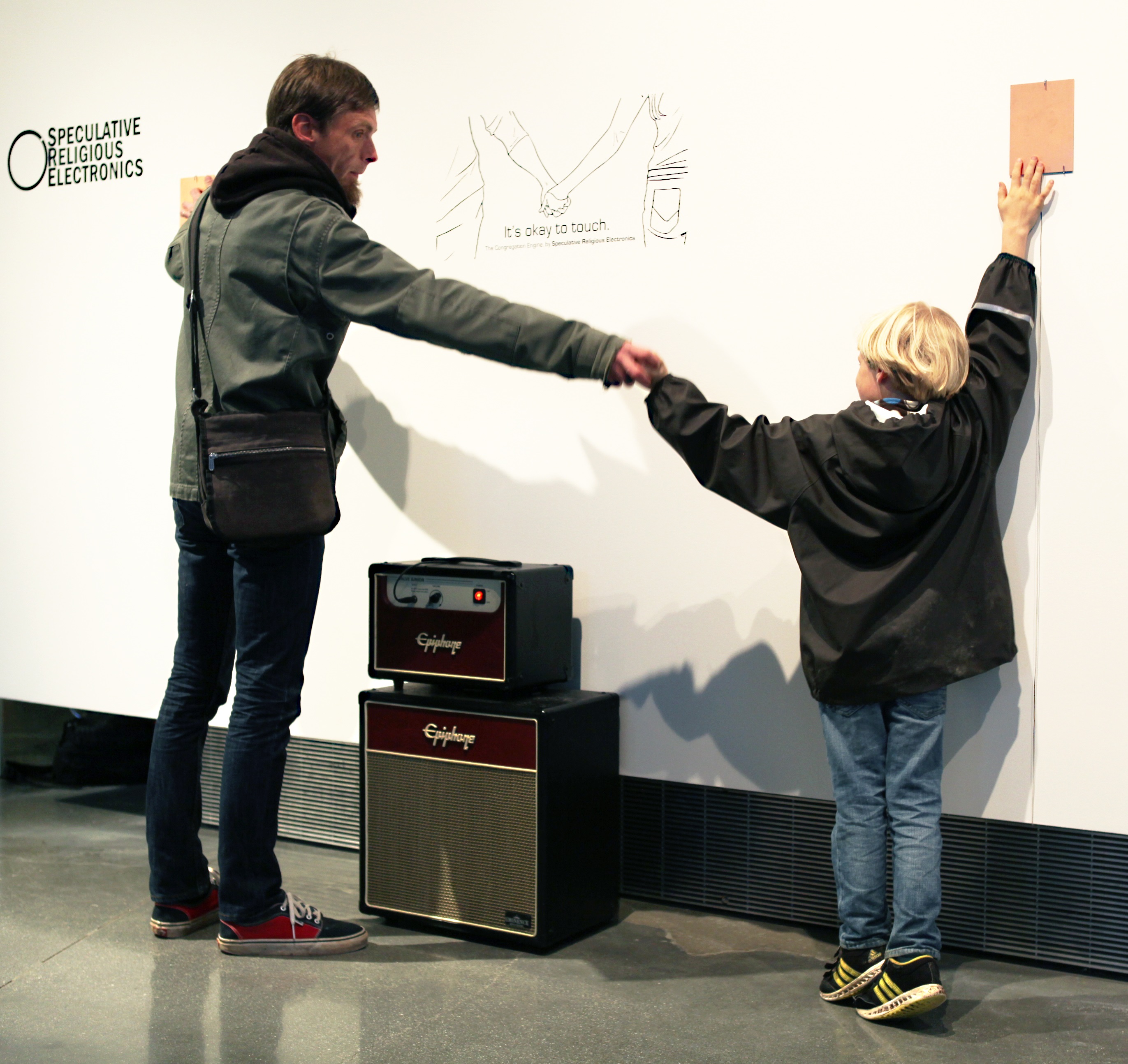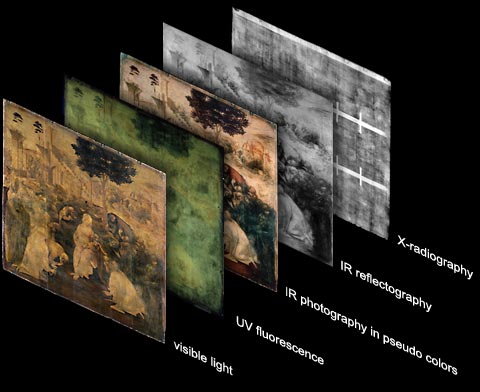CORPUS Exhibition Explores Concept of Body from Art, Engineering Perspectives
By Tiffany Fox, tfox@ucsd.edu, (858) 246-0353
San Diego, Calif., March 7, 2013 — One could say that the University of California, San Diego division of Calit2 has long been fixated on ‘bodies’ of one kind of another -- from Director Larry Smarr’s experiments with the “Quantified Self” movement to the Machine Perception Laboratory’s quest to make robots more human-like.
|
This spring, researchers at Calit2 (or the California Institute for Telecommunications and Information Technology) explore their fascination with ‘bodies’ in an exhibition of art and research called “CORPUS.” The group showcase of video, photography and sound installation features work by Calit2-affiliated Professors Michael Trigilio and Maurizio Seracini, as well as a number of other UCSD artists and researchers.
“CORPUS,” which was curated by Visual Arts Ph.D. Lara Bullock, is located in UCSD’s new Structural and Materials Engineering (SME) Visual Arts Gallery and is open to the public through May 17.
The works in “CORPUS” are grouped into aesthetic “pairs” in order to show the relationships between art and engineering, conceptual and formal ideas. They are further divided into three components, all of which explore a different notion of “bodies”: the metaphysical, the phenomenological and the somatic body.
As part of the exhibition’s “metaphysical” component, Trigilio exhibits two works from his “Speculative Religious Electronics” project. To fully experience his “Congregation Engine,” gallery-goers are asked to simultaneously touch separate copper panels to create a circuit with their bodies, which are then subjected to minute reverberations comprised of sounds with a religious context.
“Churches, temples, and spiritual centers sometimes encourage congregants to touch,” explains Trigilio, who is a Visual Arts faculty member. “The point of human contact may summon a notion of peace, connection or trauma. The ‘Congregation Engine’ is designed to directly amplify human contact, relying on square-wave oscillation as an indicator of connection. The touch is sung aloud as if it were a living instrument or an alarm.”
Another of Trigilio’s works on display, “Zenthesizer” is an instrument designed to sonically locate the ephemeral nature of "awareness" in Buddhist meditation.
The Zenthesizer, which he built in collaboration with Lee Montgomery, broadcasts a tone across all FM Radio frequencies, looping from 87.7FM up to 107.7FM and back again. “Listen to any FM radio (tune into your favorite music or news station) and you will hear a sudden burst of Zenthesizer tone,” says Trigilio. “And just as suddenly, the tone will disappear, drifting on to another spot on the dial.”
Trigilio’s work, along with an installation by Klaus Ley that studies the role of adhesion molecules in inflammation, explores consciousness and the related notions of creation and destruction that emerge at the onset of self-awareness.
“It’s about imagining a different context for religious practice where people can play with and make things that are real rather than having to use their faith or imagination,” Trigilio adds. “I want to make weird and shimmering electronic-sounds, transcending the mundane, bogus attempts at ‘holiness.’ Questions I ask myself when working on this project include: What kind of fuzz-pedal would the Pope use to explain Medieval apologia? What synthesizer will bring Satori during Zazen? How can we understand desire and sin with nothing but a square-wave and a frequency modulation? And so on. Rather than merely being works of fiction, mythology, or psychological abuse, these devices actually do something.”
|
In his work for “CORPUS,” Seracini and his research team at Calit2 used multispectral imaging techniques to “look beneath the surface” of Leonardo da Vinci’s “The Adoration of the Magi” to reveal original drawings that had long been hidden by successive levels of pigment and decay. To see the drawings, gallery-goers scan the painting with an iPad equipped with custom augmented reality software called ARTifact, which was designed by Calit2’s Falko Kuester and David Vanoni.
Like the other works in this segment of the exhibition, which include Eleanor Antin’s interpretation of ancient Greek figures, Seracini’s research is concerned with “otherworldly” experience and allusions to the transcendence of the material body, as well as the implications of the act of re-creation, which is an essential part of both artistic and engineering practices.
“This work is about generating surprise and curiosity and generating emotions,” notes Seracini, who is the emeritus director of Calit2's Center of Interdisciplinary Science for Art, Architecture and Archaeology (CISA3). “We are so used to being passive in front of a work of art, just reading the description and then moving on. When I see visitors in a museum environment, most are not really getting the inner meaning, those hidden messages of beauty, greatness and creativity that are in every masterpiece. With this research, we wanted a way to let people discover that story just using their hands, as if they were wiping off time.
“That’s one way science and technology can help in the field of cultural heritage,” he adds. “This really could become almost a revolution in terms of how we will look at masterpieces hopefully from now on.”
The works in the “somatic” section of the exhibition are concerned with the literal body as an animate object/subject and how the body "moves." Babette Mangolte’s photographs investigate the dancer's body as a dynamic and fluid form. Qiang Zhu's research investigates the efficiency of fish locomotion. He is interested in numerical characterization of the structure versus function of these beingsin order to aid in the development of bio-inspired propulsion systems. When coupled, these two works resonate in terms of the fragility of the body as a constantly changing and moving entity.
The SME Visual Arts Gallery is open from 11 a.m. to 5 p.m. Tuesday through Friday. The gallery will be closed from March 16 through April 1.
Media Contacts
Tiffany Fox, tfox@ucsd.edu, (858) 246-0353
Related Links
Speculative Religious Electronics
Center of Interdisciplinary Science for Art, Architecture and Archaeology (CISA3)



